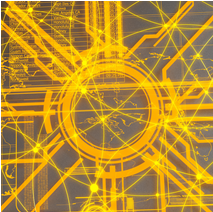 Throughout forward operating bases in Afghanistan, US soldiers are using 3D printers to whip up practically anything they might need. Reminiscent of the replicator device featured in Star Trek everything from storage containers to vehicle spare parts, there’s a fully equipped 3D printing lab only a short helicopter ride away.
Throughout forward operating bases in Afghanistan, US soldiers are using 3D printers to whip up practically anything they might need. Reminiscent of the replicator device featured in Star Trek everything from storage containers to vehicle spare parts, there’s a fully equipped 3D printing lab only a short helicopter ride away.
In an interview with Fox News, Westley Brin, product manager with the Army’s Rapid Equipping Force (REF) said:
“[It’s] basically like a huge glue gun.”
With this technology, the REF engineers can build almost anything that the soldiers on the ground might require. Mr Brin explained:
“Soldiers walk into the lab and say, ‘this is my problem.’ The PhDs then do the work and show it to the soldiers. The soldiers give them feedback and they work together tinkering with the tech until it is exactly fit for purpose.”
Much like modern architecture, the REF lab’s 3D printer utilises complex computer-assisted design (CAD) software to conceive the design and allow the engineers to analyse its practicality for the task before they build it. Once satisfied with the CAD drawing, the information is then fed to the 3D printer which builds the object from scratch using glue or resin to build it layer by layer.
Currently the CAD-assisted printing technology can only create softer plastics which, while extremely versatile, have a relatively limited lifespan of perhaps one or two months. This means that the objects made are usually short-term solutions to be used in the field. However, the team at the REF lab will create copies to be used as prototypes for more durable versions which are manufactured back in the US or in associated labs in Europe and further afield.
The team at the Afghanistan REF lab will also communicate with engineers and experts in CAD jobs from around the world who will often analyse the specifications of the object that they are building and will offer their advice for solutions to any problems that the team might have.
There are big plans for the lab’s future, involving expansions which will give the team the capability to apply the same 3D printing solutions to more durable materials than plastics. Perhaps one of the most exciting and heartening future plans for this technology is for providing aid while responding to natural disasters. The ability to produce parts for power generators, vehicles and a whole range of other essentials will be invaluable for disaster relief efforts and could save countless lives.
